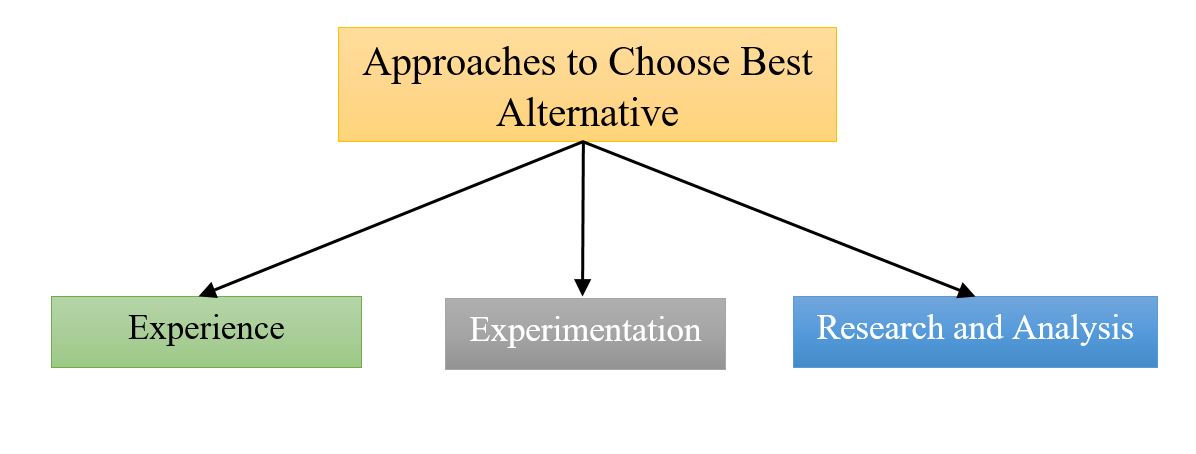Approaches to choose best alternative in Decision Making
After evaluation of various alternatives, the next step is the selection of the best solution. It requires an ability to draw distinction between seen and unseen forces, between tangible and intangible and intangible forces between facts and guesses. The ability to select the best course of action from several possible alternatives separate the successful manager form the unsuccessful ones. In attempting to select from alternatives, several basic approaches of decision-making are open to the manager. Lets have a look at these approaches to choose best alternative in decision making.

i. Experience
Managers can choose an alternative based on their past experience if they have solved similar problems earlier. Managers rely more on experience than alternative methods of choice. Past experience has some benefits but it has certain limitations that it blocks making correct choice specially when the environmental factors are more flexible.
ii. Experimentation
Experimentation which is generally used in scientific enquiry involves that a particular alternative is put in practice, result is observed, and the alternative giving the best result is selected. For example, many organizations before launching the product on large scale in the wider market, first go for test marketing of their products, where they introduce the product in small market. During test marketing the actions can be taken to change product features which are not acceptable. Experimentation as a method for choice of an alternative can be used on a limited scale because of cost and time factor.
iii. Research and analysis
Research and analysis is the most certain method of selecting an alternative, specially when major decisions are involved. This approach entails solving a problem first by comprehending it. It involves a search for relationship between the more critical variables, constraints and planning premises that bear the objective sought. In the second stage, the alternative is broken into various components. Their individual impact on objective is evaluated and the impact of all factors of an alternative is combines to find out the total impact of the particular alternative. The one having the most positive impact is chose. Since this requires making a lot of calculations, often the help of computer is taken, in fact, various computer based models have been developed to make the choice of an alternative easier.
Though various approaches are available for choosing an alternative, the decision maker’s personal values and aspirations affect what alternative will be choosing. Thus, the rational process of decision making is considerably affected by personal factors.
